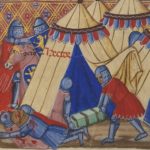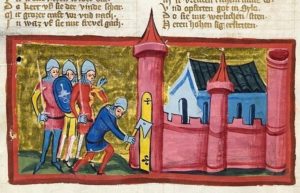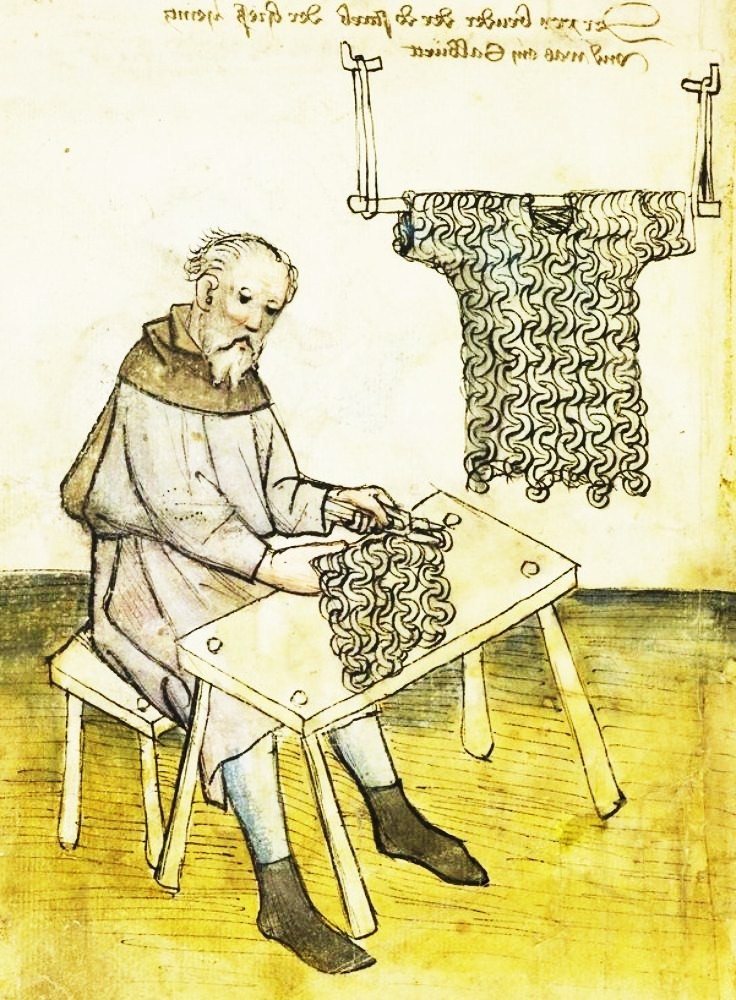DAILY LIFE – CHIVALRY

War chest
- Early 15th century
- Spruce wood, iron
- Germany
War chests were carried on wagons, providing army equipment and armour with well-protected transport all the way to the battlefield. Here, thick iron hinges are nailed to the wood to hold the parts of the chest together. Water ran off the saddle-roof design during transport. There are two handles on the sides to carry the chest.
Légende: Trojans pillaging the Greek camp, Romance of Troy, Benoît de Sainte-Maure, 1340-1350, folio 65r

Chain mail with « barley grain » rivets
- 15th century
- Steel
It is used to protect the wearer from slashing sword strokes, axes and spears. The chains on this suit were made from full rings without soldering or rivets. Such rings were considered more robust. They were linked to open rings, which were then rivetted.

Armet
- About 1570-1580
- Wrought iron
- Italy
An armet is an enclosed helmet that appeared in the 15th century in Italy, replacing the heavier great helm and the bassinet.
This armet is richly decorated in the style of the Milan workshops and probably belonged to a knight from the upper nobility.

Arrowheads
- 14th and 15th centuries
- Wrought iron
This is a set of arrows of various kinds. In the Middle Ages, wrought-iron arrowheads were divided into two main groups: war arrowheads and hunting arrowheads, each with their own specific features adapted to their use.

Archers’ ring
- 14th century
- Bronze
The archer’s ring was worn on the thumb to protect his flesh from rubbing against the bowstring.

Mace
- About 1450
- Wrought iron, copper
- Germany
Improvements in metal-plated armour made swords less effective. The mace became a favourite weapon, used to penetrate protective armour. Here the mace has 4 wings on its head, as well as small ailettes on the upper part attached by copper brazes.

Large axe head
- 15th century
- Wrought iron
- 33cm long
The axe was one of the most widely used weapons in the Middle Ages due to its versatility both in close combat and for destroying obstacles.

Légende: Karlsruhe Library, 14th century, Germany.






